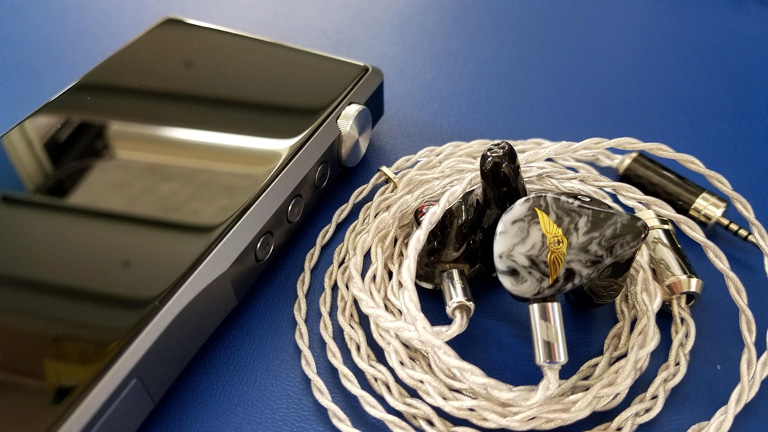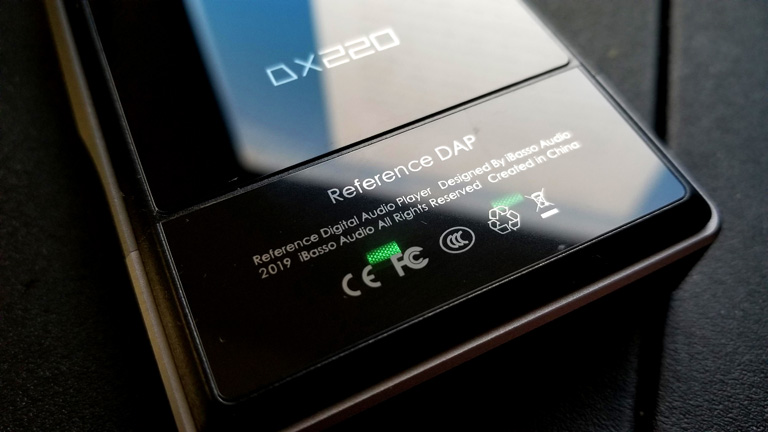The DX220 is a warm, full-bodied device. Whether we’re talking AMP1mk2, AMP8 high-current module, or even the vacuum tube AMP9, the DX220 is decidedly warm and organic of tone. That’s not to say the AMPs don’t have an effect on the sound, because they most certainly do. And I shall endeavor to articulate their influence over the experience. But I was pleasantly surprised to note the distinct voice of the DX220 shine through, no matter what module you connected it to. Unlike the DX200, there is no inherently cold tilt to compensate for.
iBasso took their new DAP in the direction of the DX150: Bold, musical, and strong. It issues authoritative sonics, with smooth, naturalistic color. This is an easy, pleasing listen that will not soon fatigue. Joyful depth and seductive richness, accompanied by a grand soundstage, makes even the most boring headphones seem brimming with potential. For those monitors capable of portraying it, the DX220 renders exquisite dimensionality, giving shape and structure to the notes, as if you can almost see the artist or instrument releasing them.

As you’d expect from a Pro-grade SABRE chip, the DX220 is one bad mother f**ker when it comes to detail retrieval and resolution. The smallest trickle of water at the church window or the subtlest flutter of wings on the 17th ward, and you hear it as if you are there, ears perked. This is top tier quality, make no mistake. And all without that SABRE glare of poorer implementations. iBasso has mastered this stallion, and what you get is a profoundly honest, grounded presentation. The most natural of naturals.
AMP1 mk2 is the perfect starting model. It was enough to impress me right out of the box. It’s nimble and detailed, warm, but artfully reserved. There’s power and authority, with a subtle elegance to beguile the listener. To put it simply, it’s beautiful.
AMP8 is 4.4mm Balanced, and my favorite with the DX200. The high current module added such dynamism and robustness. And indeed, it does this for the DX220, as well. Though it’s not as needed as it was with the last gen player. Still, if you want a bigger soundstage, the strongest punch, and enough power to drive Planar Magnetic headphones to satisfactory levels, then this is indeed the right AMP for you. Everything just seems bigger and more vibrant. But you will lose out on some battery life.

AMP9, which is 3.5mm single-ended, has become my favorite for the DX220. While it’s supposedly high current, it lacks the driving force of AMP8, so it’s not well-suited for seriously demanding headphones, like Sundara, or the LCD-3. But it does manage the 300Ω Atticus splendidly, a setup with which I’ve enjoyed countless hours. AMP9’s claim to fame is the Korg Nutube vacuum tubes. They achieve exactly what you’d wish of them: The Tube Sound. Extra warmth, glorious harmonic overtones, and new plateaus of richness. Even the soundstage seems bigger. I’m tempted to say it exceeds that of AMP8, though without two DX220s to quickly switch between, it’s hard to be sure. While I’d like to have the driving power of a high-current module, AMP9 creates something so utterly magical I cannot bring myself to use anything else.
Making the comparison to the DX200 ($899, Review HERE), you see the older model has a thinner, airier sound. It comes off cleaner, due to brighter tuning. One of the major criticisms of the DX200 with the original AMP1, was how cold and lifeless it could seem. Luckily, subsequent amp modules resolved much of this. The DX200>AMP8 has been my reference player for a long time now, and it never fails to impress. Still, the new DX220 is unquestionably warmer, with greater note weight and a rounder, fuller presentation. There’s a maturity and refinement which is most welcome. Without having two identical AMP modules, I can’t rightly say which has the wider soundstage. They are both quite large, and will not disappoint in that regard.
Cayin’s recently released N6ii ($1,199) is a strong competitor. Not only is the amp circuitry replaceable, but so is the whole DAC portion. But this comparison is with the stock AK4497EQ module. And let me tell you, it’s more than enough! There is a tremendous amount of power here, and I drive the HIFIMAN Sundara with ease. It’s clean power, too. The sound is more vibrant and dynamic than the DX220, with cleaner, blacker background, greater bass presence, and sharper resolution. All this, and the soundstage is a touch wider, too. Now, this comparison is with the AMP9 Nutubes installed. Against the AMP8 high-current module, the gap is less impressive, with the DX220 gaining a bit of vibrancy and sharpness. But I’d still give Cayin the win here, if only by a little. I like both DAPs set with Slow Roll-Off digital filters, for the most natural sonics. Yet to my ears, the N6ii takes the lead in transparency. But of course, it’s more expensive.


